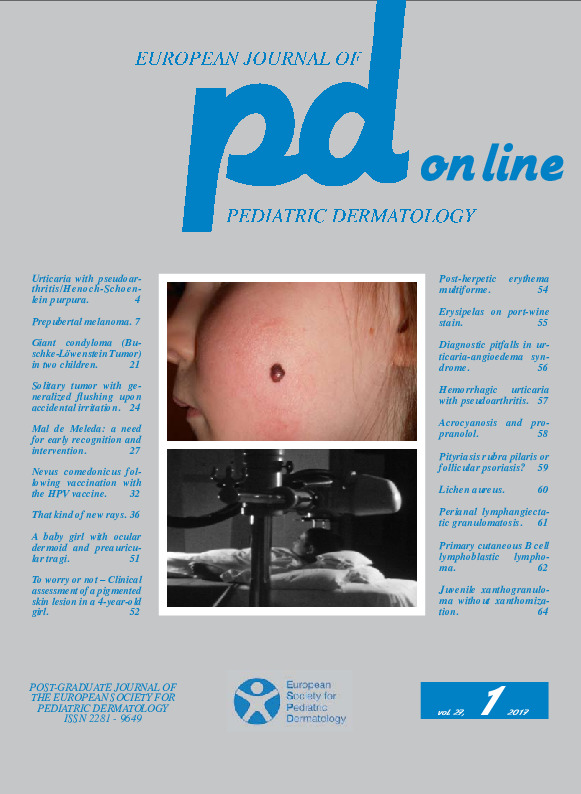Juvenile xanthogranuloma without xanthomization.
Downloads
DOI:
https://doi.org/10.26326/2281-9649.27.1.1333How to Cite
Milano A. 2017. Juvenile xanthogranuloma without xanthomization. Eur. J. Pediat. Dermatol. 27 (1): 64. 10.26326/2281-9649.27.1.1333.
pp. 64
Abstract
The natural history of juvenile xanthogranuloma (JX) begins with a skin-colored or reddish papule that grows rapidly and after a few weeks takes on a yellow color; the growth stops after about 6 months of its appearance; JX remains yellow for a few months, then begins the regressive phase that brings in about one year to his disappearance sometimes with slightly atrophic outcome; during the regression the typical yellow color becomes less visible. On histology, in the initial growth phase there is a proliferation of histiocytes that later begin to engulf the fatty tissue and assume a vacuolar xanthomized aspect; the characteristic Touton giant cells become obvious; in the phase of involution the yellow color becomes less noticeable for the fibrosis that replaces the xanthomized infiltrate (1). JX can not have a yellow color because it is situated deep in the subcutaneous (2) or because as in our case the xanthomization of histiocytes occurs with significant delay.Keywords
juvenile xanthogranuloma, Xanthomization

